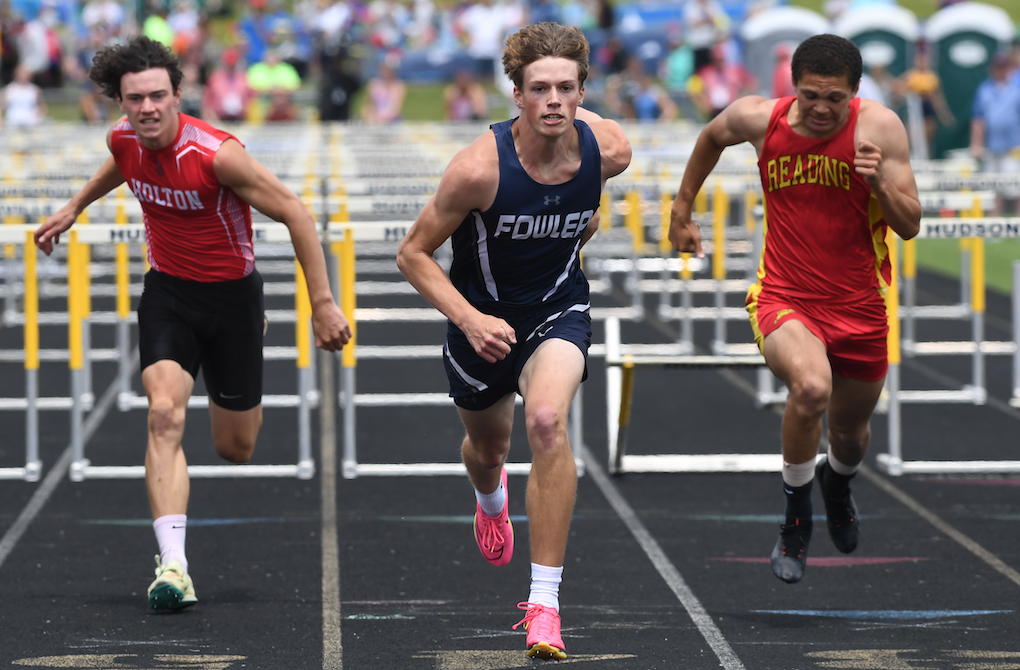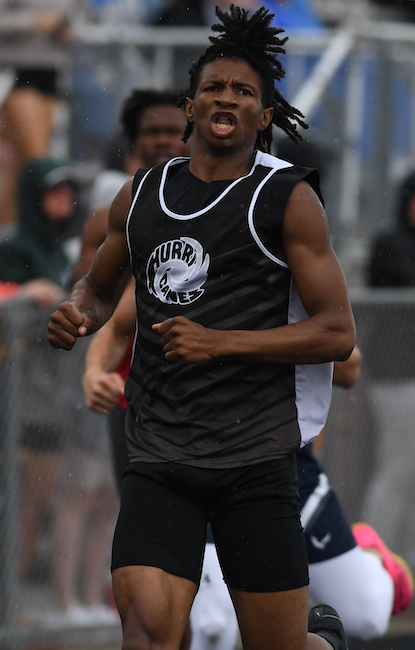
Casting Lines for Future Tournaments
August 12, 2016
By Jack Roberts
MHSAA Executive Director
The MHSAA is best known to the public for the tournaments it conducts to conclude the fall, winter and spring seasons each school year.
These tournaments, the first and largest program of the MHSAA, have survived the Vietnam War, the Korean conflict and two World Wars. They have survived the technology bubble, the housing collapse, the energy crisis and the Great Depression.
MHSAA tournaments existed at the dawn of aviation and at the time of our nation’s lunar landing. Popes, presidents and governors have changed and changed again and again, and MHSAA tournaments roll on year after year.
But the sense of tradition and permanence and inevitability of MHSAA tournaments doesn’t dissuade us from asking questions about our tournaments, even some of the most basic questions. Here are two.
Question #1
I have long been and will always be an advocate for a Ryder Cup format for the MHSAA Golf Finals, and a team tennis approach to the MHSAA Tennis Finals; but 90 years of tradition is hard to overcome. Might this be a more exciting format? Could it be co-ed? Could it reverse the decline in boys tennis participation, and increase girls golf participation? Wouldn’t it be fun to try?
Periodically, the International Olympic Committee requires each of the designated Olympic sports to defend its status, to state its case why the sport should remain a part of the Olympic program. Then, after a series or votes that retain one sport at a time, the IOC drops the sport that makes the weakest case. It does so to make room for one of the previously unlisted sports that makes the best case for inclusion.
This would appear to keep the existing Olympic sports on their toes, and to keep the Olympic movement fresh and reflective of modern trends in sports.
While I would not enjoy the controversy, I can see the potential for some positive results if the MHSAA were to invoke the same policy for determining the 14 tournaments it will provide for girls and the 14 for boys.
This might cause us to consider more deeply what a high school sport should look like, or at least what an MHSAA tournament sport should stand for.
On the one hand, we might be inclined to drop tournaments for those sports that involve mostly non-faculty coaches and non-school venues, or require cooperative programs to generate enough participants to support a team, or resort almost entirely to non-school funding, or cater to individuals more than teams.
Or perhaps this process would cause policymakers to forget traditional thinking and ask: “In this day and age, should we shake off traditional notions of sport and consider more where modern kids are coming from?” That might mean fewer team sports and more individual sports, more “extreme” sports like snowboarding and skateboarding, and more lifetime sports, meaning not just golf and tennis and running sports, but also fishing and even shooting sports.
Currently, MHSAA policy states that the MHSAA will consider sponsorship of a tournament series for any sport which 64 member schools conduct on an interscholastic basis as a result of action by the governing boards of those schools.
Should the only question be how many schools sponsor a sport, or must an activity also have certain qualities and/or avoid certain “defects?” What should an MHSAA tournament sport look like and stand for?
Question #2
Bristling from criticism that his association is a money-grabbing exploiter of children, my counterpart in another state said, “If we were running our programs just to make money, we would do very many things very differently.” I knew exactly what he meant.
Because we care about the health and welfare of students, because we mean what we say that the athletic program needs to maximize the ways it enhances the school experience while minimizing academic conflicts, and because we try to model our claim that no sport is a minor sport when it comes to its potential to teach young people life lessons, we operate our programs in ways that make promoters, marketers and business entrepreneurs laugh, cry or cringe.
If money were the only object, we would seed and select sites to assure the teams that attracted the most spectators had the best chance to advance in our tournaments, regardless of the travel for any team or its fan base. If money were the only object, we would never schedule two tournaments to overlap and compete for public attention, much less tolerate three or four overlapping events. If money were the only object, we would allow signage like NASCAR events and promotions like minor league baseball games.
Those approaches to event sponsorship may not be all wrong; they’re just not all right for us. And we will live with the consequences of our belief system.
During a typical school year, more than 20 percent of the MHSAA’s 2,097 District, Regional and Final tournaments lose money. Not a single site in golf, skiing or tennis makes a single penny. In no sport did every District, Regional and Final site have revenue in excess of direct expenses.
In fact, in only three sports – boys and girls basketball and football – is revenue so much greater than direct expenses overall that it helps to pay for all the other tournaments in which the MHSAA invests.
That’s right: invests. When we present our budget to our board, we talk about the MHSAA’s investment in providing tournament opportunities in all those sports and all those places that cannot sustain the cost of those events on their own. How much is this investment worth to students, schools and society?
These two are core questions that require our focus far in advance of talk about scheduling, site selection, seeding and the myriad matters that too often hijack our time and attention.

Fowler Boys Clinch 1st Team Title since 1988, Buford Leaps Into Record Book
By
Keith Dunlap
Special for MHSAA.com
June 2, 2024
HUDSONVILLE — In 2023, Anthony Buford of Detroit Frederick Douglass would have won the long jump at the MHSAA Lower Peninsula Division 4 Track & Field Finals if not for a historic effort.
Buford nearly was first, but had to settle for second after Peck’s Alex Affer jumped a meet-record distance of 23-feet, 1.5-inches.
Affer graduated last year, but he still was providing Buford plenty of motivation when he started the long jump event at this year’s event.
“My main motivator all year has been my main guy Alex Affer, the former record holder at 23-1,” Buford said. “He was really anticipating me breaking his record this year.”
Buford made good on Affer’s proclamation by setting a new Division 4 Finals record, jumping a recorded distance of 23 feet, 2 inches, into a headwind to best what Affer achieved a year ago.
“I was really surprised I broke it with that headwind I was jumping into,” Buford said. “But honestly, I just had to make it happen.”
Oh, but Buford wasn’t done during his busy and successful day.
Buford then won the 400 dash, finishing first in a time of 49.91 in a headwind and with rain coming down.
“I’ve been fighting to beat 49 (seconds) all season,” said Buford, who decided to focus on the 400 meters and long jump this year after primarily competing in the 100 and 200-meter dashes last year. “Just to come out here and beat my time while it was raining and a headwind coming into my face, that really shows how much more mentally tough I’ve gotten over time.”
 Buford was also second to teammate Adrian Smith in the 200 and ran in the 1,600 relay to help Douglass finish second on the day.
Buford was also second to teammate Adrian Smith in the 200 and ran in the 1,600 relay to help Douglass finish second on the day.
Buford’s performance wasn’t quite enough to lift his team past Fowler, which captured the team title with 56.5 points, four more than Douglass. It was Fowler’s first Finals team championship since 1988.
Brady Feldpausch led Fowler’s point scoring by finishing first in the 110 hurdles with a time of 14.57, running as part of the winning team in the 800 relay, taking second in the 300 hurdles and then being a part of the winning 1,600 relay that clinched the title.
“It feels amazing,” Feldpausch said. “I don’t know what to say. We just all have the same mindset. We come to practice and work hard. We knew if we all ran like we knew how to, we’d have a shot.”
Fowler entered the last event, the 1,600 relay, knowing that in order to clinch the team win it had to win the race and have Douglass finish fifth or lower.
A strong event all year for the Eagles, they delivered again, winning in a time of 3:26.43. Pair that with a ninth-place finish by Douglass, and Fowler had what it needed.
Fowler head coach Brett Schafer credited unsung heroes with stepping up for his team and fulfilling a goal talked about all year.
“We scored in field events where we didn’t expect to,” he said. “Our first meeting with them at the start of the year, our whole goal was to hang a banner in the gym. We did that today.”
Kalamazoo Hackett Catholic Prep took third with 44 points after winning the last two LPD4 team titles.
PHOTOS (Top) Fowler’s Brady Feldpausch, left, edges Reading’s Tayshawn Bester to win the 110 hurdles Saturday at Baldwin Middle School. (Middle) Detroit Douglass’ Anthony Buford finishes his win in the 400. (Click for more from Ken Swart/RunMichigan.com.)

